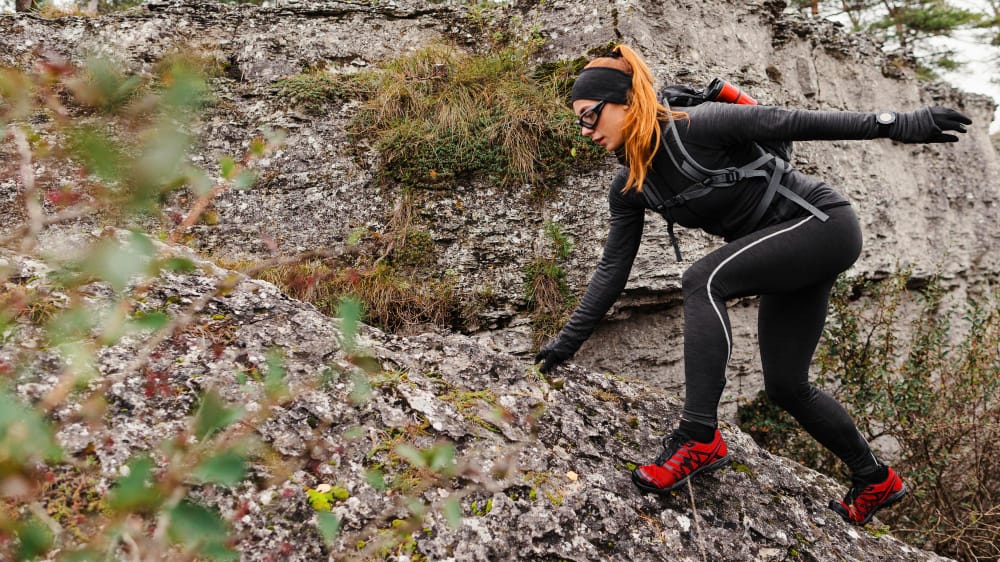

Yes, hiking can build muscle. Hiking builds muscle by engaging multiple muscle groups. The legs power each stride, working the quadriceps, hamstrings, glutes and calves. The core and back stabilize your body over uneven terrain. Arms get involved through pumping poles. This full-body workout stresses diverse muscles, prompting them to adapt and grow stronger. With consistency, hiking transforms your physique by adding tone and definition.
Hiking is a popular outdoor activity enjoyed by millions of people around the world. But can hiking build muscle? The answer is yes! Hiking is a total body workout that engages various muscle groups, including the quadriceps, hamstrings, glutes, calves, and core muscles. Hiking on uneven terrain also helps develop balance and coordination, benefiting overall muscle growth and development.
Table of Contents
Can Hiking Build Muscle? A burning question for a hiker
Yes, hiking can build muscle! However, it’s important to remember that hiking alone may not lead to significant muscle growth, especially if you aim for substantial hypertrophy. Hiking primarily targets the lower body and core muscles, making it an excellent addition to a well-rounded exercise program that includes resistance training and other forms of exercise.
Related Article: Does Hiking Work Your Core? Yes! Hiking Builds Muscle, But How?
Science-Backed Evidence about Building Muscle with Hiking
Numerous research studies provide evidence supporting the idea that hiking can contribute to muscle growth and development. Here are some insights from scientific research on how hiking promotes muscle growth:
1. Increased Lower Body Strength and Muscle Mass
A study published in the Journal of Strength and Conditioning Research observed that participants who regularly hiked for eight weeks experienced significant increases in lower body strength and muscle mass. This improvement can be attributed to the constant engagement of lower body muscles while traversing uneven terrain, climbing uphill, and descending downhill. These actions continuously demand the muscles, leading to increased strength and hypertrophy over time.


2. Uphill Hiking and Muscle Hypertrophy
A study published in the European Journal of Applied Physiology found that uphill hiking can lead to significant muscle hypertrophy in the lower body. When hiking uphill, the body’s muscles are subjected to increased tension and resistance, stimulating muscle growth. The steeper the incline, the greater the muscle activation and the more significant the potential for muscle growth.
3. Eccentric Contractions and Muscle Adaptation
Downhill hiking places a unique demand on the muscles through eccentric contractions, which involve the lengthening of muscles under tension. Eccentric contractions cause microscopic damage to muscle fibers, which, in turn, leads to muscle adaptation and growth. A recent study published in Medicine & Science in Sports & Exercise revealed that downhill walking increased muscle strength and hypertrophy over time, particularly in the quadriceps and hamstrings.
4. Functional Strength and Stability
Hiking on uneven terrain demands functional strength and stability, which engages muscles throughout the body, including the core and upper body. This exercise promotes functional strength and muscle development, which can benefit other activities and daily life.
5. Improved Cardiovascular Fitness and Muscle Endurance
Going on hikes is a great way to improve your cardiovascular fitness, boosting your overall muscle endurance. Recently a study published in the American Journal of Preventive Medicine found that regular hiking can improve cardiorespiratory fitness, enhancing muscle performance and endurance during extended hikes or other physical activities.
Which Muscle Groups Are Built From Hiking

Hiking primarily targets the muscles in your legs. Specifically, the quadriceps (front of thighs), hamstrings (back of thighs), glutes, soleus and gastrocnemius (calf muscles). The engaged muscles depend on whether you’re ascending or descending.
Ascending
When heading uphill, you’ll feel more burn in your hamstrings, glutes, and calves. It is because they activate more than your quadriceps to power you upwards. However, don’t expect major size gains in the glutes from hiking alone. Adding resistance through weights is needed for significant hypertrophy.
Descending
Descending downhill engages your quadriceps eccentrically to fight gravity with each step. Prepare to really feel that quad burn!
Even though you may not realize it, many other muscles like the abs, back and shoulders work to stabilize your body while hiking. It’s common to feel soreness in unexpected areas the next day.
The takeaway is hiking utilizes diverse musculature for both propulsion and postural control. Targeted uphill and downhill training elicits different strength adaptations.
Related Article: Does Hiking Work Abs? Exploring the Impact of Hiking on Abdominal Muscles
Which Hikes help you build Muscle mass?
| Type of Hiking | Targeted Muscles | Muscle Building Ability |
|---|---|---|
| Uphill hiking | Quads, glutes, hamstrings, calves | High |
| Downhill hiking | Quadriceps, calves | Moderate |
| Stair climbing | Glutes, quads, calves, hamstrings | High |
| Off-trail hiking | Core, stabilizer muscles, calves | Moderate |
| Backpacking | Legs, glutes, back, shoulders | High |
| Fast-paced hiking | Quads, glutes, calves, hamstrings, core | High |
| Hiking with weighted vest | Legs, glutes, back, shoulders, arms | Very High |
| Balance hiking (uneven terrain) | Core, stabilizer muscles, calves | Moderate |
Just like with strength training, the most challenging hikes build muscle most effectively. For maximum returns, seek out routes with a high elevation gain relative to mileage.
Steep hikes force you into a lunge-like angle with each step, intensely activating the legs. Taking bigger strides on inclines increases the lowering range of motion, upping the burn.
Wear a weighted vest if a short hike doesn’t require a heavy backpack. It distributes added resistance comfortably across the upper body for a greater training effect.
The takeaway is to pick the most gruelling, lung-busting hikes within your ability level. Constantly challenge your muscles with tough terrain and weighted packs when possible. That intense, rugged training stimulus yields the greatest muscle and strength gains.
Maximizing Muscle Growth: Tips to build muscle for Hiking Workouts
To optimize your hiking workouts and enhance muscle development, consider the following tips:
1. Choose Varied Terrain
Select trails with a mix of inclines, declines, and uneven surfaces. This variety will engage different muscle groups, leading to well-rounded muscle development. Hiking on uneven terrain also challenges your balance and stability, further promoting functional strength and muscle growth.
2. Vary Your Pace
Mix up your hiking routine by incorporating intervals of faster-paced hiking with periods of slower-paced walking. This variation challenges your muscles and cardiovascular system, helping to increase overall fitness and endurance. High-intensity interval training (HIIT) can be particularly effective in boosting aerobic and anaerobic capacity, improving muscle performance during extended hikes.
3. Add Weight
Wearing a backpack with additional weight can intensify your workout and stimulate muscle growth. The extra weight increases the demand on your muscles, particularly in your lower body and core, promoting greater strength and muscle development. Be cautious about the amount of weight you add, and ensure that your backpack fits well to avoid injury or discomfort.
4. Use Trekking Poles
Utilizing trekking poles engages your upper body muscles, such as your arms, shoulders, and back, providing a more comprehensive workout. Trekking poles can also help reduce the strain on your knees and lower body, especially during downhill sections.
5. Cross-train
Combine hiking with other forms of exercise, such as strength training and yoga, to support overall muscle growth and balance. Strength training exercises can help you build the muscles used during hiking. Additionally, practicing yoga can enhance your flexibility, balance, and core strength. Incorporating a variety of exercises in your fitness routine will ensure well-rounded muscle development and reduce the risk of injury.
6. Rest And Recovery
Give your muscles time to recover and grow by incorporating rest days into your hiking routine. Adequate rest and proper nutrition are essential for muscle repair and growth. Additionally, consider incorporating stretching and foam rolling exercises to promote muscle recovery and flexibility.
By following these tips, you can maximize muscle gains and make the most of your hiking workouts, resulting in improved strength, endurance, and overall fitness.
Health Benefits of Hiking: An effective way to build muscle


Hiking is a popular outdoor activity that goes beyond merely building muscles. While it does help in strengthening various muscle groups, it also offers an array of additional health benefits. Let’s delve deeper into the advantages of hiking and how you can incorporate it into your fitness routine.
Improved Cardiovascular Fitness
Hiking challenges your heart and lungs, especially on trails with varying terrains and inclines. As you tackle these elevation changes, your cardiovascular system works harder, ultimately improving your heart’s efficiency and lung capacity. Consistent hiking can help reduce the risk of heart disease, high blood pressure, and stroke.
Reduced Stress and Enhanced Mood
Combining physical exertion and natural surroundings makes hiking an excellent stress reliever. It triggers the release of endorphins, which are the body’s natural mood elevators. Hiking can also reduce cortisol levels, the stress hormone, leaving you feeling more relaxed and rejuvenated after a hike.
Increased Flexibility and Balance
The uneven terrain and natural obstacles encountered during a hike require you to engage your core muscles and maintain balance. Regular hiking can help improve your flexibility, coordination, and overall body awareness. These benefits can translate into better performance in other sports and activities and a reduced risk of injury.
Boosted Mental Well-being
Research has demonstrated that spending time in nature can positively impact mental health. Hiking provides an opportunity to escape the hustle and bustle of everyday life, allowing you to reconnect with the natural world. This immersion in nature can help reduce anxiety, improve focus, and enhance overall cognitive function.
Social Benefits
Hiking can be a social activity, allowing you to bond with friends and family or meet new people with shared interests. Group hikes can provide motivation, encouragement, and a sense of camaraderie, making the experience more enjoyable and rewarding.
Improved Sleep Quality
Physical activities like hiking can help regulate your sleep patterns. A good hike can tire you out, making it easier to fall asleep and stay asleep throughout the night. Additionally, exposure to natural light while hiking can help regulate your body’s circadian rhythm, further improving sleep quality.
Related Articles:
hiking versus other exercises for muscle building
| Exercise | Muscle Groups Worked | Muscle Building Potential |
|---|---|---|
| Hiking | Legs (quads, hamstrings, calves), glutes, core | Moderate – builds some muscle but limited for major growth |
| Weight training | Full body or specific muscle groups based on exercises | High – can strongly build mass and strength |
| Running | Legs, glutes, core | Low-Moderate – builds some lower body muscle |
| Cycling | Quads, hamstrings, glutes, calves | Low-Moderate – tones legs but limited growth |
| Swimming | Full body, arms, shoulders, back, core | Low-Moderate – provides a toned physique |
| Yoga | Full body, legs, core | Low – increases flexibility and balance more than muscle size |
| Pilates | Core, glutes, arms | Low – improves core strength but not muscle growth |
| CrossFit | Full body, functional strength | High – builds muscle and all-around fitness |
| HIIT Workouts | Full body with high-intensity intervals | Moderate – combines endurance and muscle benefits |
Weighted Vest enhances muscle building
Wearing a weighted vest while hiking can be a great way to build muscle and increase the intensity of your hikes. The added resistance from the weight helps to strengthen your legs, glutes, core, and upper body. Start with a lighter weight, like 10-20% of your body weight, and gradually increase the weight as you get stronger. Using a weighted vest is an effective way to build muscle for hiking while enhancing your normal hikes.
Using a Weighted Vest Properly for Hiking
When using a weighted vest for hiking, proper fitting is important for comfort and safety. Make sure the vest fits snugly but allows a full range of motion. Start with lower weights, like 5-10lbs, to get your body adjusted. Warm up first before adding weight. Focus on good posture and engage your core as you hike. Listen to your body and take breaks as needed. Using a weighted vest can help build leg and core muscles for hiking.
The Muscle-Building Benefits of Weighted Vests
Hiking with a weighted vest offers many benefits beyond building muscle. The extra resistance strengthens the legs, glutes, calves, and core muscles used in hiking. It also helps improve balance and stability on uneven terrain. Carrying extra weight increases calorie burn, helping with weight loss goals. A weighted vest can help build specific muscle groups used in hiking, like calves, quadriceps, and glutes. The extra resistance prepares your muscles for carrying a backpack on longer hikes.
Backpack or Weighted Vest – Which Builds More Hiking Muscle?
Rucking refers to hiking with a loaded backpack rather than a weighted vest. Both are great for building hiking muscle but have some differences. A weighted vest keeps the weight centered on your hips for better balance. Rucking shifts the load to your shoulders and back muscles. Rucking allows you to carry more weight overall for a greater strength workout. Vests are better for shorter durations, while rucking is good for endurance. Choose based on your goals and preferences. Both are excellent ways to build leg and back muscle for hiking.
Choosing the Right Weighted Vest
When selecting a weighted vest, consider material, weight range, and fit. Look for durable fabrics like nylon or neoprene. Ensure it has adjustable straps for a snug fit and good weight distribution. The weight range should fit your needs, from 10-80lbs or more. Adjustable weighted packs help increase resistance as you get stronger. A good weighted vest will be comfortable and allow a full range of motion for hiking muscle building. Invest in a quality vest to see great results.
Women-Specific Weighted Vests for Hiking
For women looking to build muscle through hiking, these top-rated weighted vests offer a comfortable, tailored fit:
- Mir Adjustable Weighted Vest: wide range of weights from 10 to 60 lbs with adjustable front and shoulder straps. Designed specifically for women.
- Hyperwear Hyper Vest PRO: lightweight vest made for women, distributed weight across core. Adjustable and breathable.
- ZFOsports Weighted Vest: contoured and designed for women with anti-bounce tech and breathable fabric. Weights are adjustable.
- Aduro Sport Weighted Vest: comfortable vest with padded shoulder straps and tilt-free design. Weights are removable to adjust resistance.
Other Wearable Resistance Tools
In addition to weighted vests, other forms of wearable resistance can help build muscle while hiking. Wrist and ankle weights add resistance to your steps and arm swing. A weighted backpack or rucksack also provides resistance for your legs, back, and core. Resistance bands can be wrapped around legs or arms. All of these tools add extra weight to increase the muscle benefits while hiking trails. Start with light weights and increase gradually for the best results.
Leveraging Weighted Vests for Fat Loss on Hikes
A weighted vest can amplify the calorie burn from hiking, helping boost weight loss. The extra resistance requires more energy, burning calories. Start with a comfortable weight, like 5-10% of body weight. Increase the weight as you adapt for continual progress. Hike at an inclined angle and incorporate high-intensity intervals. Drink plenty of water and refuel with healthy snacks to stay energized. Using a weighted vest along with an active hiking regimen can help increase weight loss through calorie burn.
Weighted Vest Exercises for Hiking Muscles
In addition to wearing a vest for hiking, you can do targeted exercises with a weighted vest to build specific muscle groups:
- Squats and lunges – build glutes and quadriceps. Keep proper form.
- Calf raises – tone and strengthens calves. Use a step for a wider range.
- Pushups – target chest, shoulders, triceps, and core. Adjust vest weight as needed.
- Planks – engage the core and back muscles, keep hips lifted.
- Farmer’s carries – improve grip strength and posture. Keep core tight.
A weighted vest can help take basic exercises up a notch for further muscle building. Listen to your body and increase your vest weight gradually over time.
How do post-hike recovery routines help you build muscle?
Hiking works for several muscle groups in your legs and glutes. To see muscle-building results from all that hiking, it’s important to focus on proper recovery routines after your hikes. Consuming protein within an hour after hiking provides the amino acids your worked muscles need to rebuild and grow. Refueling with complex carbs and healthy fats also helps restore your body.
Using foam rolling, massage, or compression on heavily used muscles like quads and calves can reduce soreness so you recover faster. Adequate rest days give your muscles time to repair and build new tissue. Skipping proper rest and nutrition means your body can’t fully recover, which hinders muscle growth.
Following smart post-hike routines that include hydration, protein intake, muscle care, and rest will support your muscle-building goals from regular hiking. The hike itself provides the stimulus, but the recovery is what allows those leg and glute muscles to increase size and strength over time.
Should you start hiking to gain muscle?
Here are a few key points on whether you should start hiking to gain muscle:
- Hiking can definitely help build muscle, especially in the legs, glutes, and core. The constant motion of walking uphill utilizes and tones these muscle groups.
- However, hiking alone may not be enough to increase muscle size and density dramatically. To maximize muscle growth, it’s best to combine hiking with targeted strength training.
- Focus on exercises that target the main muscles used in hiking – squats, lunges, and deadlifts for the legs and glutes. Core exercises like planks are great, too.
- Add a weighted vest or backpack when hiking to increase the resistance and muscle activation further. But start light and increase weight gradually.
- Pay close attention to nutrition – ensure you eat enough protein (0.5-0.75g per pound of body weight daily) to support muscle recovery and growth.
- Take rest days between hikes and avoid overtraining specific muscles to prevent injury. Muscles grow during rest periods.
- While hiking is fantastic cardiovascular exercise, combine it with a proper strength routine and nutrition plan if significant muscle growth is your primary fitness goal.
Hiking can complement a muscle-building program by strengthening the legs and core. But for maximal muscle gains, be sure to incorporate targeted strength training and proper nutrition practices, too.
FAQs for those looking to build muscle by hiking
Do you build muscles by hiking?
Yes, hiking can help build leg muscles and strength. The constant motion of walking uphill engages several muscle groups in your legs and glutes, like quads, hamstrings and calf muscles. The uneven terrain also works the smaller stabilizer muscles. Start hiking to build muscle in your legs and improve overall fitness.
Can you get in shape just by hiking?
Hiking is a great low-impact exercise that can help you get in shape. The combination of aerobic activity and hill climbing works multiple muscle groups to build strength and endurance. Hiking helps burn calories to aid weight loss and builds leg muscle. Hike at a brisk pace and add weight like a backpack to increase intensity. While hiking alone may not get you ripped, it’s an effective full body workout.
Does hiking once a week build muscle?
Hiking just once per week can provide some muscle-building benefits, but more frequent hikes will be better for increased muscle mass. Hike at a challenging pace and terrain to get your heart rate up. Add a weighted vest or backpack to further strengthen muscles. Focus on leg exercises between hikes to fully develop quadriceps, glutes and calves. While once weekly is helpful, hiking 3-4 times per week will better support muscle growth.
Does hiking burn fat or build muscle?
Hiking is excellent for both burning fat and building leg muscle. The aerobic nature of hiking helps burn calories and body fat. A steep incline hike can burn over 500 calories per hour. Building muscle also boosts your metabolism for further fat-burning. The resistance from hiking uphill works to strengthen and tone your leg and gluteal muscles. Hiking’s combo of calorie burn and muscular engagement provides fat-burning and muscle-building benefits.
How much protein a day hiking?
When hiking regularly, aim for 0.5-0.75 grams of protein per pound of body weight daily to support muscle recovery and growth. So a 150 lb hiker would need 75-110 grams of protein per day. Focus on lean protein sources like chicken, fish, Greek yogurt and protein powder. Time protein intake before and after hiking when muscles need it most. Protein helps rebuild and strengthen leg muscles from hiking wear and tear.
What happens to your body after hiking?
Hiking delivers many positive changes to your body. Leg muscles become more toned and defined after regular hiking. Lungs and heart grow stronger, boosting cardiovascular health. Balance and stability improve from maneuvering uneven terrain. Hormones like endorphins and serotonin are elevated, reducing stress. Joint flexibility increases and bones become denser reducing osteoporosis risk. Hiking promotes full body health.
What not to eat before a hike?
Avoid heavy, greasy foods before hiking which can cause indigestion. Skip high-fiber cereals or beans which may cause gas. Limit dairy which could cause bloating. Stay away from sugary treats that may lead to an energy crash. Instead, fuel up with complex carbs, protein and healthy fats for steady energy. Good pre-hike snacks include oatmeal, bananas, nut butter, eggs or a smoothie. Hydrate well too.
Should I drink a protein shake after a hike?
Drinking a protein shake within 30-60 minutes after longer or very strenuous hikes can help muscles recover. The protein provides amino acids for rebuilding any strain or microtears to leg muscles from hiking. Combine the protein with hydrating fluids and carbs to fully replenish nutrients. For lighter hikes, whole food sources like Greek yogurt and fruit offer similar muscle-supporting benefits.
How hiking is better than gym exercises?
Hiking offers full-body conditioning, fresh air and scenic views that you don’t get from indoor gym workouts. The dynamic movement on uneven terrain engages more muscles than gym machines. Hiking outdoors provides vitamin D absorption and stress reduction. The varied cadence and hill climbing works your body differently than repetitive gym exercises. While gym training offers its benefits, the multidimensional nature of hiking provides perks you can’t find at the gym.
Is hiking better than weightlifting?
Hiking and weightlifting both provide excellent fitness benefits. Weightlifting is better for building mass and strength in specific muscle groups. Hiking promotes full-body endurance while improving cardiovascular health. The two complement each other well. Try to incorporate both – lift weights to strengthen hiking muscles like quads, glutes and calves. And hike frequently to boost overall conditioning. A combination of hiking and weightlifting is ideal for comprehensive fitness.
What are hiker legs?
“Hiker legs” refers to the toned, muscular legs that develop after regular hiking. Defined quadriceps, hamstrings and calves result from the hill climbing and uneven terrain of hiking. Greater muscle separation occurs in the legs which enhances the shapely, chiseled look. Improved muscle tone and reduced body fat percentage also contribute to the coveted hiker’s legs physique.
Does hiking increase testosterone?
Moderate to intense hiking can help boost testosterone levels. The exercise, movement and muscle engagement promote testosterone production. Being outdoors in nature also lowers stress hormones that inhibt testosterone. However, overtraining from excessive hiking may actually lower T-levels. Get plenty of rest and nutrition to support healthy testosterone function. Consistent hiking at the right intensity and duration can aid natural testosterone.
Conclusion
Consider incorporating it into your regular fitness routine to reap the full benefits of hiking. Start with shorter, easier trails and gradually increase the distance and difficulty as your fitness level improves. Remember to wear proper footwear, stay hydrated, and pack essentials like a map, compass, and first aid kit. Always let someone know your hiking plans and estimated return time, especially if hiking alone.
In conclusion, hiking offers a multitude of health benefits beyond muscle building, making it a fantastic choice for anyone looking to improve their physical and mental well-being. Give it a try, and you may find yourself on a lifelong journey to better health and a deeper connection with nature.

SARAH LEE
Sarah has been hiking for over five years and is passionate about promoting the mental and emotional benefits of spending time in nature. She has written several articles on the topic and strongly advocates hiking as a form of therapy. Sarah is also a certified yoga instructor, often incorporating yoga and mindfulness practices into her hiking trips. She is dedicated to providing accurate and up-to-date information on trail conditions, difficulty levels, and must-see sights.

SARAH LEE
Sarah has been hiking for over five years and is passionate about promoting the mental and emotional benefits of spending time in nature. She has written several articles on the topic and strongly advocates hiking as a form of therapy. Sarah is also a certified yoga instructor, often incorporating yoga and mindfulness practices into her hiking trips. She is dedicated to providing accurate and up-to-date information on trail conditions, difficulty levels, and must-see sights.
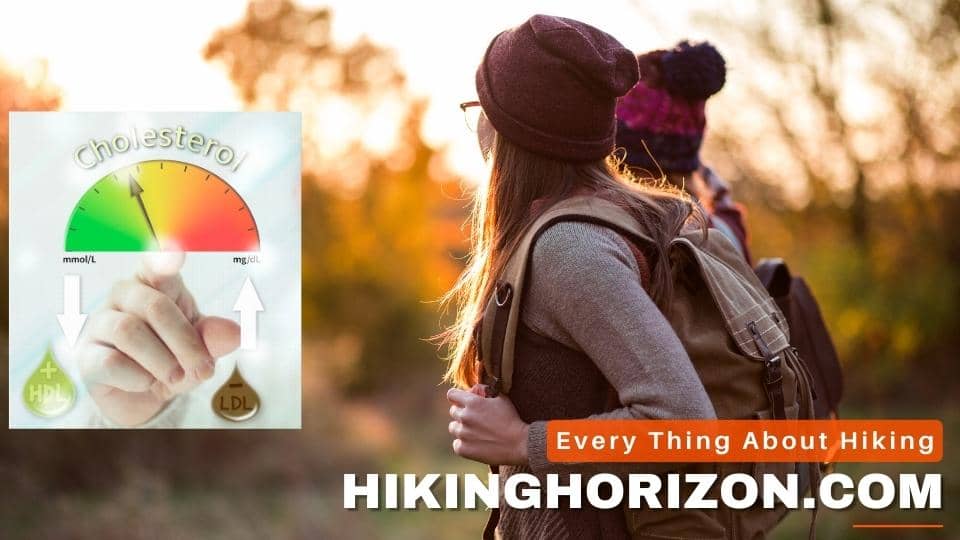
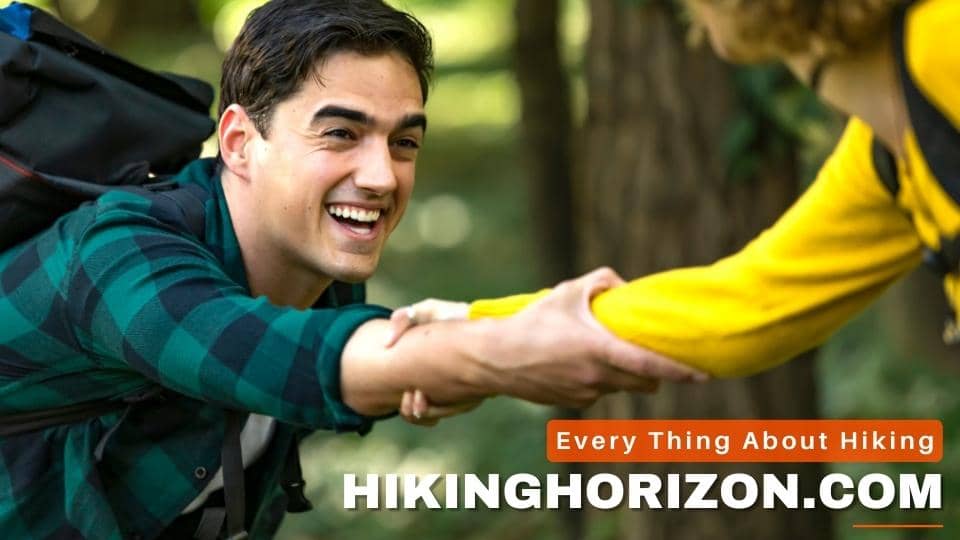
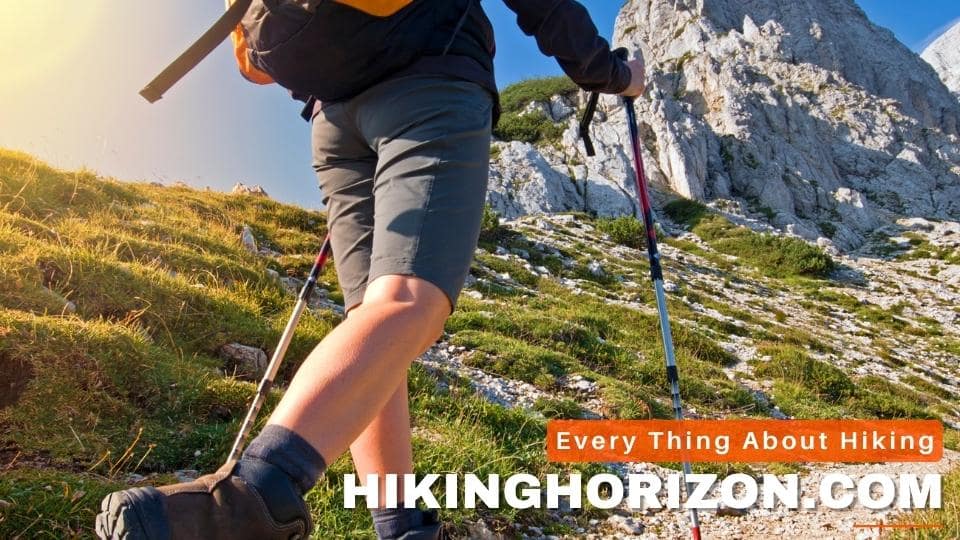
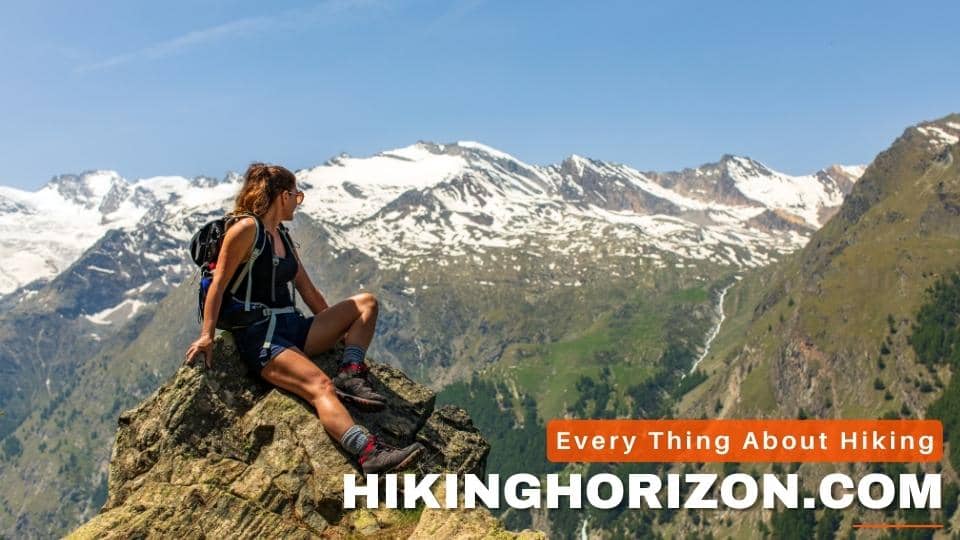
Pingback: How many miles is considered a hike? Unraveling the Hike Distance Mystery
Pingback: Can Hiking Cause Knee Pain? Exploring the Connection